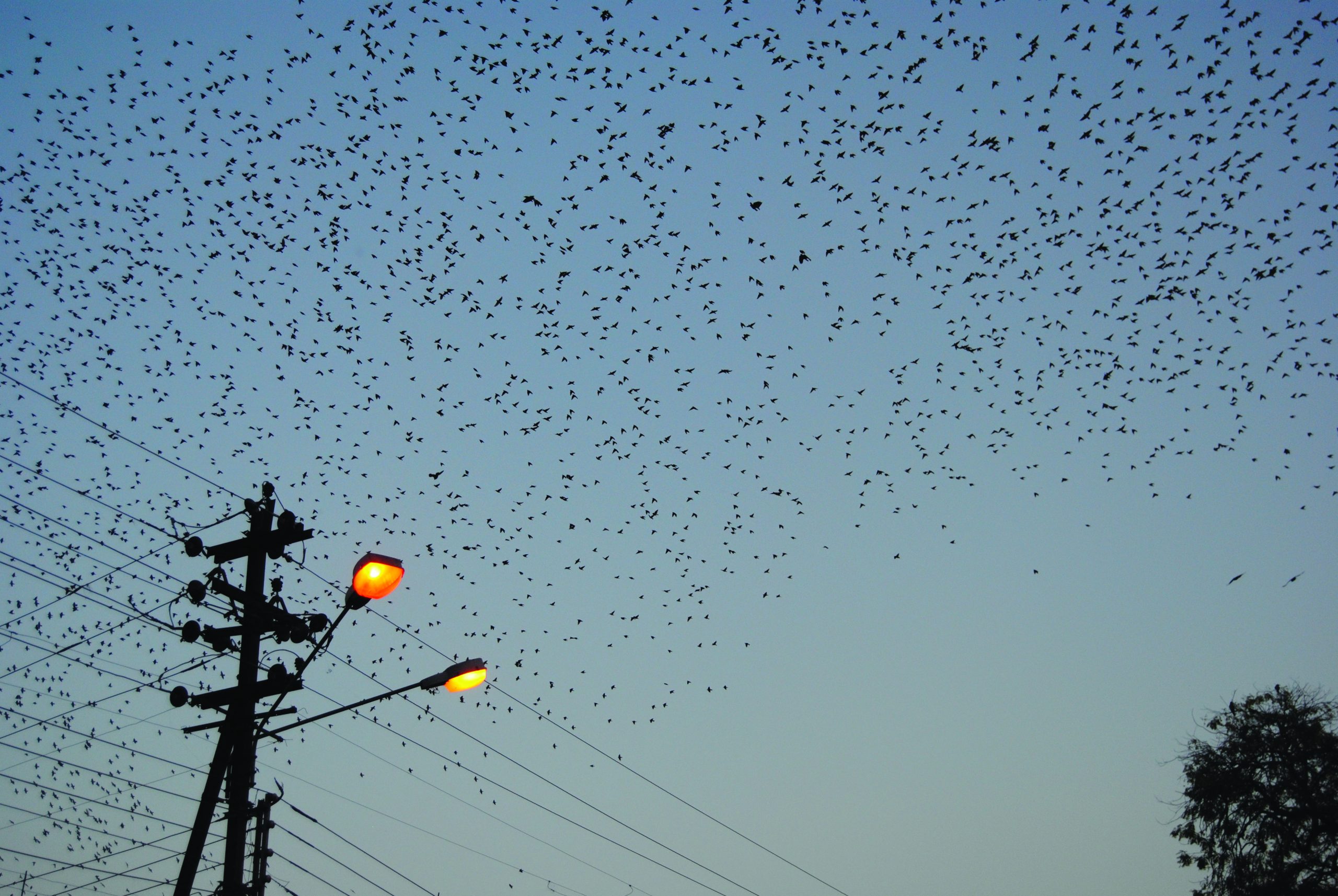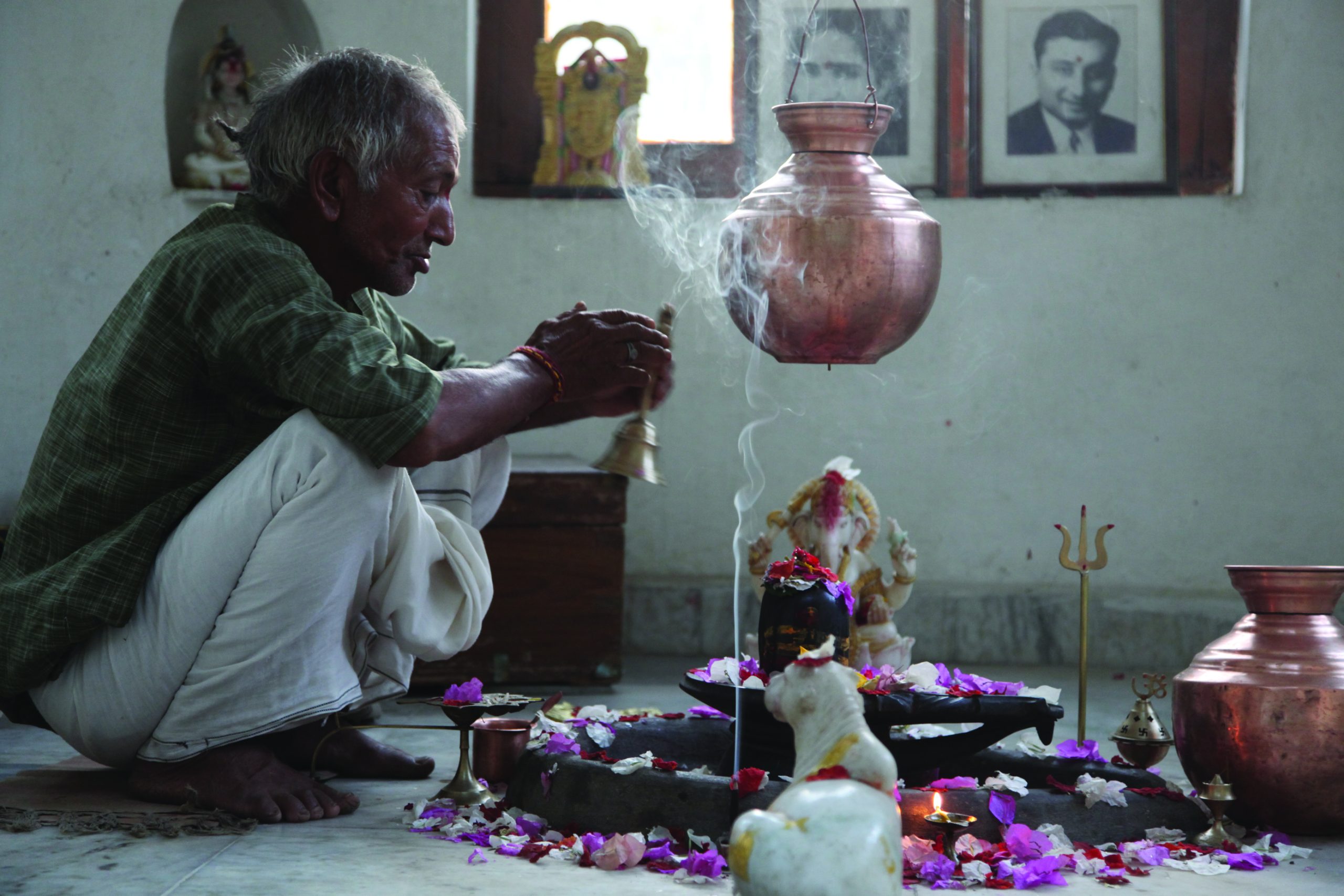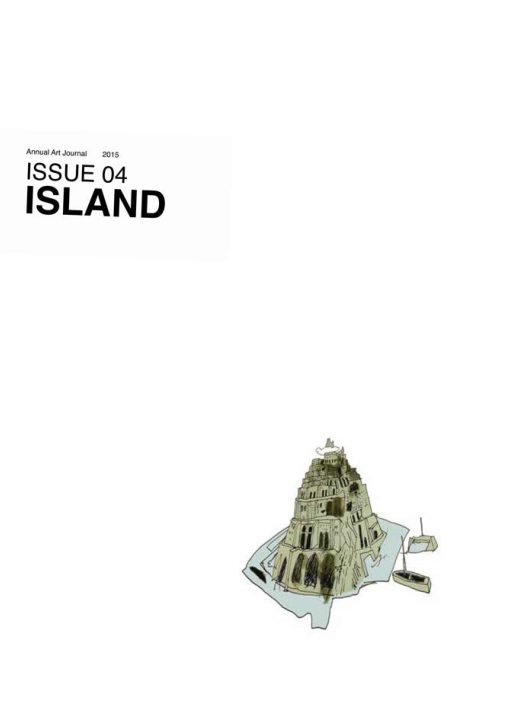“Who is thy wife? Who is thy son?
The ways of the world are strange indeed.
Who art thou? Whence art thou come?
…behold the folly of man:
In childhood busy with toys
In youth bewitched by love
In age bowed down with cares…
Birth brings death, death brings rebirth
Where then oh man is thy happiness?
Life trembles in the balance
Like water on a lotus leaf”1
This was the articulation of the question of life, existence, and self, emphatic in the scheme of Shankara2, a sixth century philosopher from south of India. As evident, the verse resonates a sense of self as a perpetually fluid island, appearing with birth, submerging in the sea of life, and disappearing by death, only to reappear in due course. To correct, it is the upheaval of fluid island-self marked by endless changes in the stages of existence. This is very similar to the ideas of Buddha who also suggested that life, pleasure, rebirth and the cycle from birth to death to rebirth is indicative of suffering, which can only end when this cycle itself is broken by achieving nirvana or the Buddhist state of ultimate bliss beyond which there is no life, death or resultant suffering. However, we exist in the world because we are without nirvana and hence we are subject to perpetual changes. How can one make sense of a self in this utterly helpless flux? With this question, the philosopher Shankara travelled the length and breath, from south to north, of ancient India, learning and critically engaging with scholars of various schools of philosophy. Thus, he reached a village named Mahishi, in the Maithili speaking region in the north, now situated within the official map of Bihar abutting the borders of Nepal via river Kosi. Mandana Mishra, a renowned scholar of Mimamsa, one of the old schools in philosophy in ancient India, lived in Mahishi. Mandana was a proponent of the awakening of self within social institutions of conjugal life. In other words, for Mandana, the vocation of a householder was superior to that of a monk, a renouncer ascetic. Shankara offered to debate with him on this issue. Mandana’s wife, Ubhaya Bharati, a scholar of repute too, was the judge of the debate between the two scholars. The prolonged debate that entailed elaborate logical arguments resulted in the defeat of Mandana Mishra. Shankara proved that the ultimate goal of self is to recognise the limits of apara vidya3, the knowledge imposed by the perceptions embedded in social existence. This is the domain of maya (approximately translated as worldly illusion and creative energy), which the self ought to be transcending to arrive at the superior para vidya, self-realisation of the indwelling Brahman, the absolute truth! However, upon the defeat of Mandana Mishra, the judge of the debate, wife of Mandana Mishra, Ubhaya Bharati, announced: the debate was not over yet! For Mandana was a householder and he was only one part of the full unit. The other part was his wife, who must be defeated in debate for the complete defeat of her husband. Thus the debate with Shankara continued. The very first question Bharati raised was about the intricacies of sexual-conjugality in the life of a householder. In other words, it was about the socio-cultural and sexual embeddedness of a self. Shankara, being a renouncer-ascetic, had little knowledge of conjugal life and its sexual dynamics. He expressed his unawareness of the issue under question and requested Bharati to lend him a little time to undertake adequate research. He returned and answered the questions of Bharati satisfactorily. He was the victor indeed.
But the above episode is not to be read only as an instance of Shankara winning an intellectual debate. The secret of the episode is in the socio-cultural embeddedness, institutional bonding, and the mundane conjugal life of a householder. The crux of the story is the prerequisite acquaintance of an island-self with pleasure and pain of living. Mere knowledge of the transcendental self could not make for truth; the mundane maya also holds keys to opening doors in the passage of the transcendence. This could be deemed the becoming of a fluid island-self.
At this juncture, it is imperative to ask: how does it all surface in our contemporary visual worldview? Could this instance from conjectural past be of any significance in our contemporary socio-cultural landscape? Are we islands named Aham Brahmsmi? And if we are, what is the undercurrent sociability thereof? A humble proposition is that one is the island-self named Aham Brahmsmi with deeper socio-cultural undercurrents connecting Shankara’s apara vidya and para vidya, maya and brahman, mundane and absolute!
This process of becoming a fluid island-self must not be confined to the discursive trope of the written text alone. It must unfold in the domain of the seen, even though seeing does not become believing! As a proposition, the following are a few images from contemporary India. Some of them echo undying social stereotypes. But then, the latter is the easiest tool, to continue and discontinue, toward further creations in art, poetry, literature, and aesthetics. The trope of modernity too provides for continuity and discontinuity.
On a Visual Trope
The following photographs from contemporary India present a familiar socio-cultural landscape. However, this visual familiarity allows for a critical engagement with the undercurrents of an island-self.

An Island Faraway
Photo credit: Dev Pathak
An island faraway seems static, in a frozen frame, muffled in tides and clouds. However, could one deny the inherent dynamics? An island faraway tends to sail across the river along with the sailing canoes.

Sailing across the River
Photo credit: Sasanka Perera
Folks carry wind, dust and essence of a faraway island with their selves. With sailing canoes, the fluid island individual self crosses beaches and barriers. Trembling on the waves, however, they tend to find repose, vanity of meditation.

An Island named Aham Brahmsmi
Photo Credit: Dev Pathak
The repose is as momentary as is the identity of self. For liminal can seldom be permanent. The journey continues in quest of self, and one finds oneself amidst myriad structures.

Amidst
Photo Credit: Dev Pathak

Maya’s Self
Photo Credit: Dev Pathak
Maya entails creative energy and hence the process of becoming as well as unbecoming continues. It often leads to many gods and ways of performing devotion.

Ritualised
Photo Credit: Sasanka Perera
Devotion is however not merely for surrender. One worships a god and one becomes an extension of divine. The mortal divine indulges in regenerative plays.

Play with Maya
Photo Credit: Dev Pathak
Many more appendages to the island-self stem from the play with maya: the pleasure of winning and pain of losing, the joy of union and sorrow of separation, anguish of falling and ecstasy of rising!

Meditation on the Ruins
Photo Credit: Dev Pathak
An island-self reaches an inevitable destination. Some ruins already in existence and some decay in the offing, meditation of the island-self is to reach a reckoning leaving little to regret!
Modern Imagination of Self
Moreover, this is crucial to fathom this phenomenon in the discursive framework of modernity, selectively looking at literary imaginations. This is not a comprehensive perusal of the vast corpus of knowledge on modernity. Instead, this is a modest attempt to put some more bones and flesh to the notion of Fluid Island-Self. This is to reason with humane attributes of the metaphorical island named Aham Brahmsmi!
Unlike the fluidity of the island-self, the scheme of modernity had put existence into strict binaries. In contrast with fluidity, it perceived either an otherworldly ascetic or a this-worldly householder. This was the famous binary opposition of an entirely (En)lightened self of Immanuel Kant or a totally chained cavemen of Plato. The liberated self had to live a monastic life, away from the hurly burly of socio-cultural happenings. And the chained men had to be the pragmatic individuals of this world, capable of engendering the structure in which they lived. But then, some of these chained cavemen also appeared to be a little strange. For example, Oscar Wilde’s Dorian Gray! Gray was a man of this world. But he did not follow the principles of the cave, or the social codes of sexual liaisons. Seeking for liberation from this world’s dictums, he committed ‘sin’ since he did not walk into an ascetic’s monastic world. His liberation was not-liberating since he was sexually and selectively anarchic only in pursuit of hedonism. His anarchy was for the pleasure within this world. Unless his anarchy led him away from this world it was not appropriate in the modern scheme. The adverse impact of the hedonistic anarchy is visible on the portrait of Gray, which he hid in the attic. He did not want to see, quite peculiar of a modern man, his withering self, reflected in his portrait. He too seems to be aware of the misery of being in-between. Wilde makes Gray repent endlessly in the scheme of modern binaries. Either he has to be of this world or of the other world, and not at all a character in-between. In sum, Gray must be consistently an island-self totally chained in this world and hence unmoving.
But then, beyond Wilde’s modern scheme, Gray also presents a case of a fluid island-self. Though it manifests only in Gray’s sexual rampage it is anarchy of self directed toward hedonistic pleasure. If we omit the lamentation of Gray, an imposition of Wilde, it is a perfect case of modern man’s ambivalence.4 This is what makes an island-self to be fluid. Thus, the Cartesian Cogito, intellect free from sensuous body, seems a mere philosophical utopia. For, the scheme of modernity also entailed ambivalence. It allows a protagonist to be in an anarchic pursuit of self with or without hedonism in perspective. The scheme of modernity thus also deals with uncertain, strange, and spontaneous individuality. Moreover, the “modern man in search of a soul”5 created beliefs, mythology, gods and demons of its own. With evident skepticism toward the doctrines and systems of traditional belief, the island-self moves on to find meanings even in the world of utter meaningless. Hence, there is a meaning for even a Sisyphus despite absurdity abounds. There is awareness that everything is like mere cobwebs – meaningless in one breath, but enchanting in the other – for the modern men including Camus’ Sisyphus and Wilde’s Gray. This is the peculiar ambivalence on which scheme of modernity is precariously hinged. The ambivalence of modernity surfaced in art and aesthetics, poetry and literature abundantly. It became thereby possible to juxtapose emotional and intellectual, irrational and rational, subjective and objective, aesthetic and scientific. The Janus- faced modern existence!
At this juncture, it is imperative to briefly turn to the 20th century Hindi poetry for a synoptic comprehension of the elaborate imagination of self in consonance with the imagery of island. Amidst the plethora of poetic imagination in modern India, Agyeya’s poetics unfold a pertinent argument.6 Take for example, the poem Nadi Ke Dweep (Island of a River):7
We are the islands of the river; The river gives us shapes- angles, interior, and exterior; She makes us all rounded; She is the mother; But we are islands; and not streams of the river; Ours is a quiet surrender, stable and still; For, if we float along; we won’t exist; We would erode if we move; And yet we could not be her currents; We would be only mud; And muddy her water as we flow! It is ideal to remain an island; And this is not a curse upon us; This is our decent destiny; We are offspring of the river! Seated in her lap, we are related to the mainland.

The Conqueror Island-Self
Photo Credit: Dev Pathak
The island-self thereby wins over the avalanche of desires, the manifestations of Maya. The typical aspiration of a scholar, philosopher, ascetic, such as Shankara, to attain the self-realisation of Aham Brahmsmi!
This is important to highlight a few key terms in this poem: island, river, shapes, mother, stream, erosion, mud, and mainland! Through these key categories, Agyeya attempts to disclose the deep dispositions of a modern mind. The fear of violating the structure represented by the river, the mother, who shapes an island-self is important issue. The destiny of the static island is not a curse and hence it must not be overcome. And, the island is still connected with the mainland by the virtue of being true child of the mother river. The poem extolls the solitary island and its ability to remain an uneroding entity. If it erodes, it will be only mud and muddy the flow of river. The poet articulates a modern aspiration, in continuity with the scriptural role of the capable intellect, to stand firm in front of manifold temptations and not give in to various desires. Only then, a man could be appropriate in this world and the other world.
But then, this is not the only component of modern man’s disposition. In the anthology of Agyeya, there are several verses to add another kind of human aspiration. Almost resonating the scheme of ambivalent modernity, and adding fluidity to the uncanny certitude of Aham Brahmsmi, Agyeya’s This Solitary Lamp reads:
This solitary lamp, of warmth and affection; Proud and prejudiced, as it may be; Give it to the row of lamp!
Or another important poem, from the anthology titled Kitni Navon Mein Kitni Baar (Many Times in Many Boats):8
From faraway lands, so many times; many rocking boats I embarked; so many times I came toward you; my very own little flame! Amidst the fog, I may not have seen you; but in the faint flickering light of the fog; I could recognise your halo; many a time, patient, assured, unrelenting, un-tired; My unknown truth, many times!

Wandering Time Seeking Self
Photo Credit: Sreedeep
As time ticks away, the self seeks to reach out! It is difficult to ascertain whether this wandering is inside or outside the self. Be it as it may, it reveals an aspiration of the fluid island-self to be in a quest.

Sting of Solitary Being
Photo Credit: Dev Pathak
Needless to say, the quest of an island-self could amount to several existential stings. This eventuates for an island-self into a sting of being. Pristine, pure and petrified ¬– connected with the mainland and yet not able to traverse the passage!
These by no means represent the whole of poetic currents in modern India. That would solicit a discussion on poetic imagination of self in the works of other significant poets, such as Gajanan Madhav Muktibodh among others. The above synoptic view is only to aid in grappling with the idea of island-self in modern context. This establishes not only Janus-faced modernity in India. More importantly, this also underlines human aspirations rendering island self humanely vulnerable. If there is a notion of Aham Brahmsmi presiding the island-self, it is vulnerable to the slippery passages. Even though, Mandana Mishra and his wife Ubhaya Bharati conceded defeat in the debate with Shankara the philosophical proposition of the defeated holds significance: an individual self is socio-culturally embedded while also free to pursue the higher aspirations! This is also reflected in the scheme of modernity wherein liminal is as crucial as relatively durable positions of individuals. The in-between spaces of existence thereby become important for the island-self named Aham Brahmsmi.
Concluding Sociologically!
In more than 2000 words, the above rumination attempts to offer an irritating answer to the equally irritating sociological antinomies. These are the antinomies of self and society, individual agency and social structure, social physics and non-social metaphysics. One can say that Pierre Bourdieu did it long ago. Yes, but Bourdieu failed to think of the divide between physics and metaphysics, didn’t he? Even though many other antinomies were addressed, an unhindered puzzle remained untouched: Who is a self in social context? Is it a mere socio-cultural determination with clear morphology or something more? Emile Durkheim, an early academic in classical sociology, thought of sacred as a collective representation. Thereby, everything religious or metaphysical became components of culturally constructed ‘sacred canopy’ of Peter Berger. An individual self under the sacred canopy lost its individuality. This has been perpetual in sociological reasoning. Even the advent of individualistic perspective, mostly attributed to late modernity, could not come around the real issue: whether a man is only a physical accident in the frame of social biology or there is something more? It seems the question of a self as an Island named Aham Brahmsmi has been totally relegated to the spheres of poetry and literature, art and aesthetics! As if this were a nonissue in typically modern social science, however some psychoanalysts, the renowned renegades of Sigmund Freud, tried to engage with the issue. Well, the ‘serious’ anthropologists and sociologists do not find anything significant about psychoanalysis as such. If anything, it is merely a particular methodological approach and that too heavily contested. Forget about psychoanalysis, social scientists and sociologists in particular are too methodical to even traverse the terrain of individual-islands! They would ask whether they have a methodology to support their observations about Aham Brahmsmi (pun intended)! Hence they have not been able to deal with the myth of living Sisyphus of the modern world though Levi Strauss claimed to lay the cornerstone to understand the myths of the whole world. It is in this context, that this rumination holds significance for a sociologist, and teaches a simple lesson: in the world of heteronomy, an individual self is still grappling with the question of island-self!
Engaging with some of the visuals from contemporary Indian socio-cultural landscape, literary-poetic expositions, and contemplative arguments, this rumination tries to show that the island-self named Aham Brahmsmi has a socially embedded character! Each of us wishes to be an independent self. Each of us however is mired in the play with maya even though we indulge in the vanity of meditation in our solitude or on the ruins of a biography. Our discovery of selves is in the domain of the experiences in this world. We want to find the significance of our existence in this world while there is a reference to the world- afar- unknown- unverifiable! We are as much metaphysical as we are physical. Even though a philosopher meticulously divides these worlds we intend to live with a sense of the worlds interconnected. Hence for us the world of play becomes an integrally connected compartment of the world we are unaware of. We play, to be precise, on the bridge between the two worlds. And hence, our island-self is in a perpetually fluid state. This is also a humble antithesis to the articulations, which we have labelled postmodern. For, the latter has put preconditions behind the fluid state of self, such as fear, consumerism, and manmade uncertainty. However, the fluidity of island-self could be an inherent constituent of the disposition. In other words, we are fluid because we are inherently fluid. The liquidness of the island-self stems from the humane disposition and not the social preconditions, doesn’t it?


